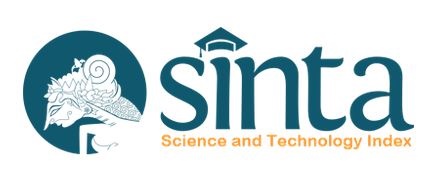Estimation of Total Carbon Stock and Mangrove Health Index in Sidoarjo using Machine Learning Spectral Analysis Method of Sentinel-2A Satellite Imagery
DOI:
https://doi.org/10.12962/geoid.v20i1.2553Keywords:
carbon stock, mangrove, MHI, NDVI, remote sensingAbstract
The mangrove ecosystem has the potential ability to absorb carbon dioxide better than other forest ecosystems. It is noted that mangrove forests have an important role in reducing the concentration of carbon dioxide in the air. Changes in land cover conditions, massive development of urban areas, and the large need for housing in the Sidoarjo are the main causes of the decline in the area of mangrove forests which have been converted into fish ponds and residential areas. This triggers a decline in the quality of mangroves and will directly impact on reducing the capacity to store carbon reserves in Sidoarjo Regency. Biomass estimation calculations were carried out using the NDVI algorithm from remote sensing results using Sentinel Imagery – 2A. Apart from that, the mangrove health index was also calculated using the GCI (Green Chlorophyll Index), SIPI (Structure Insensitive Pigment Index), NBR (Normalized Burn Ratio), and ARVI (Atmospherically Resistant Vegetation Index). Based on the calculation results, the value obtained for the coastal area of Sidoarjo Regency the TCS or total carbon stock ranged from 1.1679468503445e-09 to 84.3344 TonC/hectares. Meanwhile, the results of the mangrove health index calculation show that the condition of mangroves in the coastal area of Sidoarjo Regency has a sufficient mangrove health index, with the highest area being 637.77 hectares, while only 10.80 hectares are available has a good health index. The results of this study are expected to be one of the bases for decision-making and policies in the rehabilitation and conservation of mangrove in Sidoarjo.
Downloads
References
Alongi, D. M. (2022). Impacts of Climate Change on Blue Carbon Stocks and Fluxes in Mangrove Forests. Forests, 13(2), 149. https://doi.org/10.3390/f13020149
Cairns, M. A., Brown, S., Helmer, E. H., & Baumgardner, G. A. (1997). Root biomass allocation in the world’s upland forests. Oecologia, 111(1), 1–11. https://doi.org/10.1007/s004420050201
Hidayah, Z. (2011). Pemetaan Distribusi Ekosistem Mangrove di Wilayah Kota Surabaya dan Sidoarjo Memanfaatkan Citra Landsat TM-5 <br><i>[Distribution Mapping of Mangrove Ecosystem in Surabaya and Sidoarjo by Using Landsat TM-5 Imagery]<i> Jurnal Ilmiah Perikanan Dan Kelautan, 3(1), 7–11. https://doi.org/10.20473/jipk.v3i1.11664
Hidayah, Z., Rachman, H. A., & As-Syakur, A. R. (2022). Mapping of mangrove forest and carbon stock estimation of east coast Surabaya, Indonesia. Biodiversitas, 23(9), 4826–4837. https://doi.org/10.13057/biodiv/d230951
Hidayah, Z., Rachman, H. A., & As-Syakur, A. R. (2023). Pemetaan kondisi hutan mangrove di kawasan pesisir Selat Madura dengan pendekatan Mangrove Health Index memanfaatkan citra satelit Sentinel-2. Majalah Geografi Indonesia, 37(1), 84. https://doi.org/10.22146/mgi.78136
Jha, C. S., & Singh, S. (2015). Spatial Distribution of Biomass in Indian Forests Using Spectral Modelling. https://www.researchgate.net/publication/303822409
Jiang, Z., Huete, A. R., Chen, J., Chen, Y., Li, J., Yan, G., & Zhang, X. (2006). Analysis of NDVI and scaled difference vegetation index retrievals of vegetation fraction. Remote Sensing of Environment, 101(3), 366–378. https://doi.org/10.1016/j.rse.2006.01.003
Lu, D., Chen, Q., Wang, G., Liu, L., Li, G., & Moran, E. (2016). A survey of remote sensing-based aboveground biomass estimation methods in forest ecosystems. In International Journal of Digital Earth (Vol. 9, Issue 1, pp. 63–105). Taylor and Francis Ltd. https://doi.org/10.1080/17538947.2014.990526
Pandapotan Situmorang, J., Sugianto, S., & . D. (2016). Estimation of Carbon Stock Stands using EVI and NDVI Vegetation Index in Production Forest of Lembah Seulawah Sub-District, Aceh Indonesia. Aceh International Journal of Science and Technology, 5(3), 126–139. https://doi.org/10.13170/aijst.5.3.5836
Wahyuning Hastuti, A., Iwan Suniada, K., & Islamy, F. (2017). CARBON STOCK ESTIMATION OF MANGROVE VEGETATION USING REMOTE SENSING IN PERANCAK ESTUARY, JEMBRANA DISTRICT, BALI. In International Journal of Remote Sensing and Earth Sciences (Vol. 14, Issue 2). https://earthexplorer.usgs.gov.
Wayan Eka Dharmawan, I. (2021). Mangrove health index distribution on the restored post-tsunami mangrove area in Biak Island, Indonesia. IOP Conference Series: Earth and Environmental Science, 860(1), 012007. https://doi.org/10.1088/1755-1315/860/1/012007
WESTLAKE, D. F. (1963). COMPARISONS OF PLANT PRODUCTIVITY. Biological Reviews, 38(3), 385–425. https://doi.org/10.1111/j.1469-185X.1963.tb00788.x








